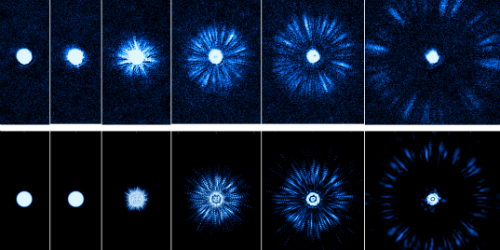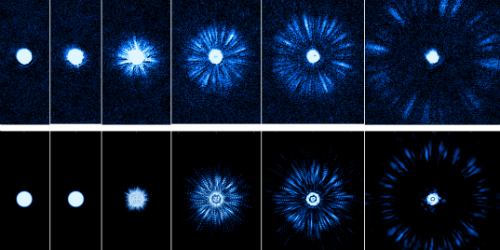Ripples and Fireworks in Bose-Einstein Condensates
By manipulating interactions between ultracold atoms, physicists aim to better understand how the behavior of quantum particles leads to exotic phenomena such as topological states and quantum phase transitions. In 2017, researchers observed that a Bose-Einstein condensate (BEC) in an oscillating magnetic field emits jets that resemble fireworks. Now, Han Fu of the University of Chicago and colleagues have discovered that prior to the formation of the fireworks, distinctive ripples from interfering matter waves form in the condensate.
Using lasers and magnetic fields, the team condensed 40,000 cesium atoms onto a disk-shaped trap near absolute zero. When the experimenters switched the magnetic field direction up and down, they produced density waves analogous to standing waves that occur in contained classical fluids. The amplitudes of these density waves gradually increased until the BEC started to emit jets. The team noted that the evolution of the BEC proceeds in three steps: the appearance of density waves, the emergence of jets, and, finally, the presence of clearly defined jets.
Fu and colleagues modeled these steps to study how the density-wave amplitudes grow and how the waves may be related to the jets. The team found that in tens of milliseconds, the spatial distribution of a single firework mirrored that of the density waves that preceded it, which suggests that the waves are direct precursors of the jets and influence their shape. This model is one of the first theoretical frameworks for studying these unusual matter-wave jets.
This research is published in Physical Review Letters.
–Sophia Chen
Sophia Chen is a freelance science writer based in Tucson, Arizona.





